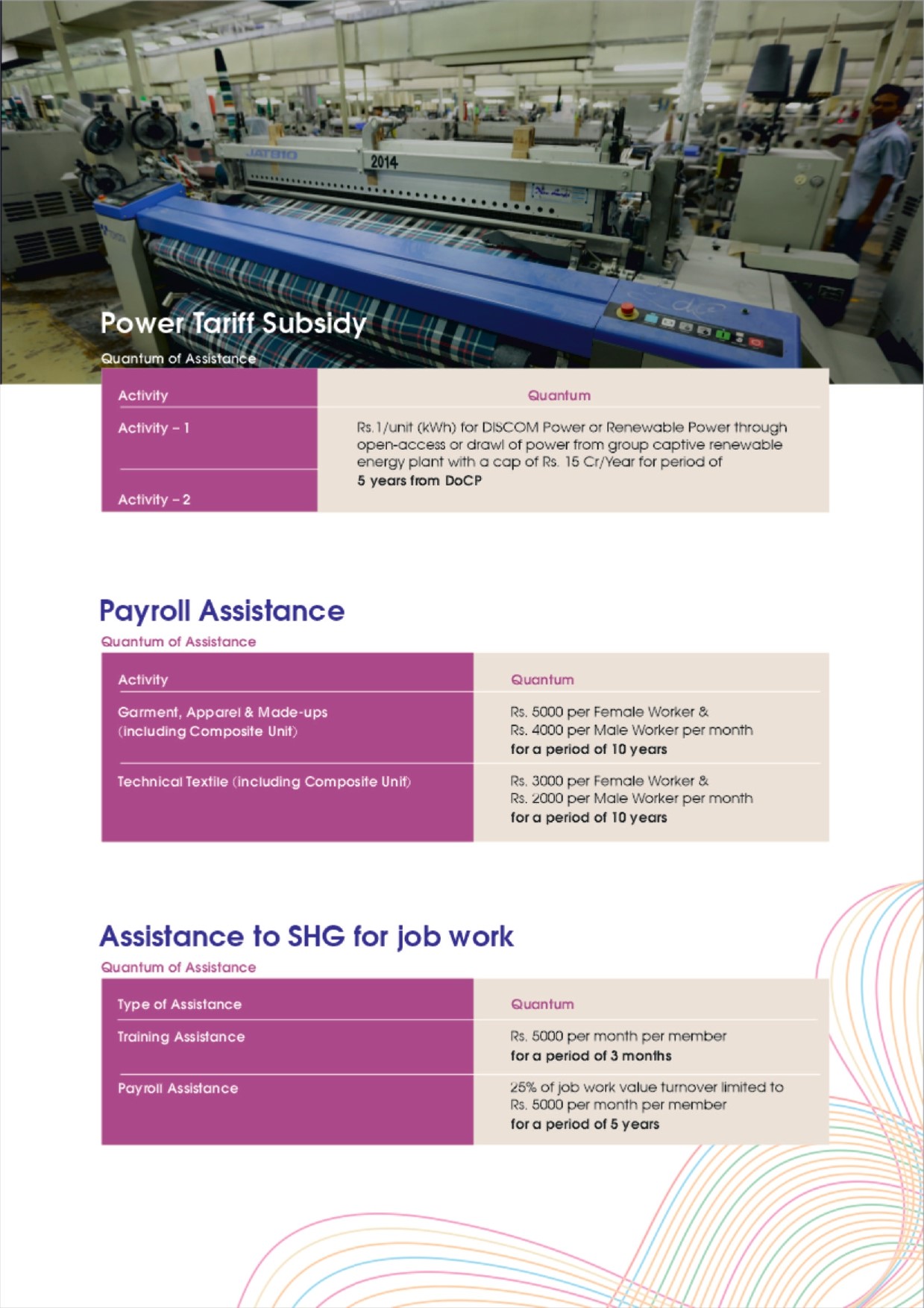Gujarat govt unveils new Textile Policy
October 15, 2024
Gandhinagar: The Government of Gujarat today announced its new textile policy, in which 10 to 35 percent capital subsidy is provisioned. In contrast to the previous policy, which offered a 5% to 6% interest subsidy, the new policy has provisions for a 5 to 7% subsidy. Additionally, a power subsidy of Re. 1 per unit has been introduced.
The new policy was launched by Chief Minister of Gujarat, Bhupendra Patel, during the Udyog Saahasikta Divas celebration, underscoring the state’s commitment to making the textile industry more competitive, sustainable, and employment-generating.
The policy focuses on key sectors such as garments, technical textiles, weaving, knitting, and MMF production, with a special emphasis on expanding technical textiles, which are essential for industries like automotive, healthcare, and infrastructure.
It offers several fiscal incentives to encourage investment and expansion in the textile sector. These include a Capital Subsidy ranging from 10% to 35% of eligible fixed capital investment (eFCI), capped at ₹150 crore depending on location, activity and employment. Additionally, an Interest Subsidy of 5% to 7% of eFCI is available for up to 8 years. Other incentives include a Power Tariff Subsidy of ₹1/unit for five years, Payroll Assistance of ₹2,000 to ₹5,000 per month per worker (with additional support for female workers), and dedicated Support for Self-Help Groups (SHGs) in the form of payroll and training assistance.
The policy emphasizes employment generation, providing targeted support to labor-intensive units that employ over 4,000 workers, including at least 1,000 female employees. Such units will receive enhanced subsidies.
Under the PM MITRA initiative, a state-of-the-art Textile Park will be established in Vansi, Navsari district, with an investment of ₹352 crore. This project aims to improve Gujarat’s textile infrastructure, attract new investments, and generate thousands of jobs.
In his address, Chief Minister Bhupendra Patel stated that the Gujarat Textile Policy 2024 is a forward-thinking initiative aimed at empowering the state’s textile industry. “This policy not only strengthens Gujarat’s position as a textile leader but also promotes economic empowerment, particularly for women and youth. Through this policy, we are laying the groundwork for a sustainable and globally competitive textile sector,” he added.
The event was also attended by MoS Harsh Sanghavi and Cabinet Minister for Industries, MSMEs, Cottage, Khadi, and Rural Industries, Balvantsinh Rajput. During the event, Sanghavi emphasized that the policy launched today under the Chief Minister’s leadership will focus on creating significant employment opportunities for local communities. “As the Home Minister, I assure all investors that Gujarat remains a safe and secure destination for their investments,” he said.
Industry Minister Balvantsinh Rajput also noted that Prime Minister Narendra Modi has dedicated 23 years to Gujarat’s development without taking a single day off. “He is already planning for the nation’s progress up to the year 2047. This Vikas Saptah symbolizes the government’s unwavering commitment to the state’s growth. Today, states across India look to Gujarat’s development model for inspiration, and it has gained world-class recognition.The policy aims to transform Gujarat into a global leader in technical textiles and garments, aligning with the broader goal of Atmanirbhar Bharat. By supporting textile units across the entire value chain – from raw materials to finished products – Gujarat is set to drive innovation, productivity, and inclusive growth in the sector.
Key Highlights of the Gujarat Textile Policy 2024:
- Targeted Growth Areas:
The policy is focuses on garments, technical textiles, weaving, knitting, and MMF production. A special emphasis is placed on expanding technical textiles, which are crucial for industries like automotive, healthcare, and infrastructure.
- Attractive Fiscal Incentives:
The policy offers a host of financial benefits to incentivize the establishment and expansion of textile units that includes Capital Subsidy ranging from 10% to 35% of eligible fixed capital investment (eFCI), with a maximum limit of ₹150 crore based on location, activity and employment. Interest Subsidy ranging from 5% to 7% of eFCI for a duration of up to 8 years will be offered.
Power Tariff Subsidy of ₹1/unit for a period of 5 years will be provided. Financial support of ₹2,000 to ₹5,000 per month for workers, with additional incentives for female workers to encourage gender parity in the workforce. Self-Help Groups (SHGs) will receive payroll and training assistance, ensuring grassroots empowerment in textile job work.
- Employment Generation:
The policy provides targeted support to units that generate large-scale employment, especially for women. Labor-intensive units employing over 4,000 workers, with at least 1,000 female employees, are eligible for enhanced subsidies.
- Sustainability and Innovation:
The policy encourages investments in sustainable practices, offering incentives for water and energy conservation, quality certification, and the adoption of advanced technology. This aligns with the state’s vision of creating a Viksit Bharat @ 2047, where Gujarat will play a pivotal role in transforming India into a global economic powerhouse.
- PM MITRA Park:
As part of the PM MITRA initiative, the state is also setting up a state-of-the-art Textile Park in Vansi, Navsari district, with an investment of ₹352 crore. This will enhance Gujarat’s infrastructure for the textile sector and attract further investments, while also creating thousands of new jobs. DeshGujarat
Related Stories
Recent Stories
- Shah in Anand hails Salt Cooperative Initiative of Kutch, predicts Rs. 1 lakh crore Turnover of Amul next year
- Section 144 imposed after arrest of AAP MLA Chaitar Vasava
- 24 hours rainfall data from across Gujarat; Bhiloda tops, Surat City had over 4.56 inch rain
- Chaturmas 2025 starts today across Gujarat; will end on 2nd November
- Gauri Vrat Goro begins across Gujarat ; Jaya Parvati Vrat from July 8
- Stray bull attacks man in Bhachau, Kutch; CCTV footage surfaces
- In pictures: Upcoming Five-Star Hyatt Hotel at GIFT City, Gujarat




